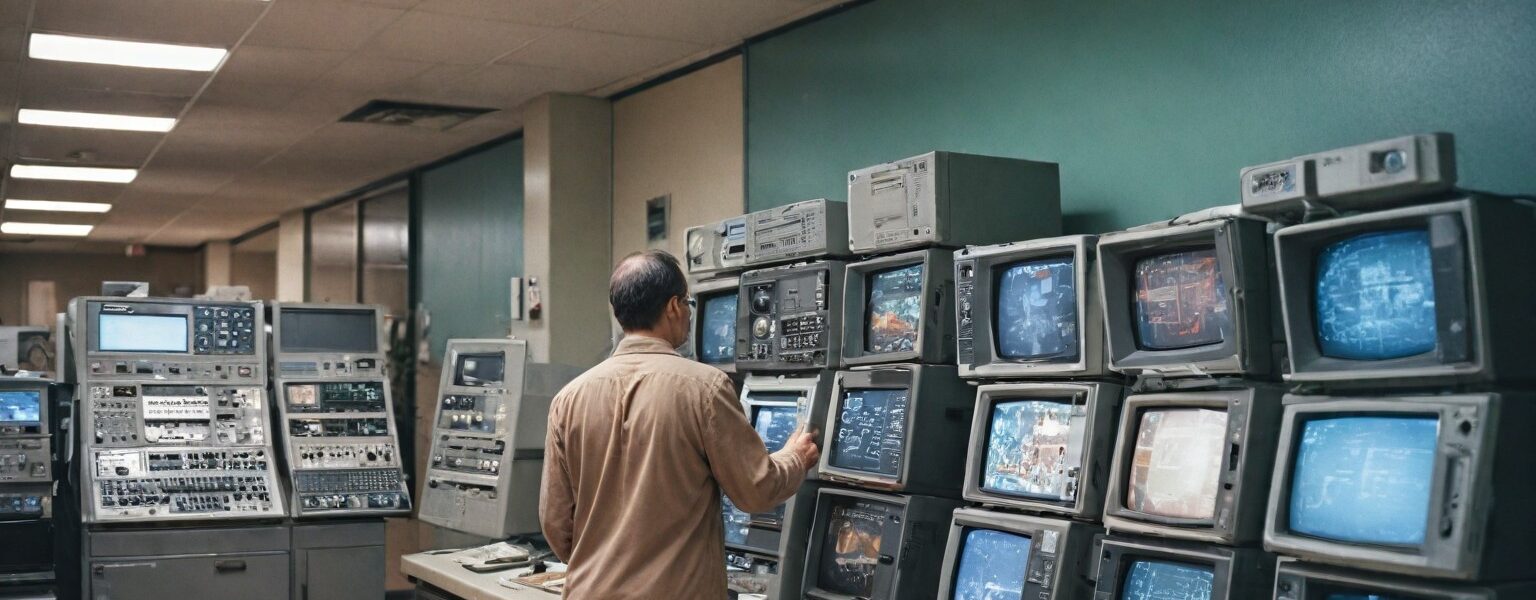The transition from paper-based medical records to Electronic Medical Records (EMR) systems marked a significant step forward for healthcare. However, many healthcare facilities still use old EMR systems, and while they were once revolutionary, they often fall short of meeting today’s healthcare needs. In this article, we will explore the history, limitations, and the future of legacy EMR systems.
What Are EMR Systems?
Electronic Medical Record (EMR) systems are digital versions of paper charts used in medical practices. They contain the patient’s medical history, diagnoses, medications, immunization dates, allergies, and lab results. The main benefit of EMR systems is that they streamline medical data management, making patient information easily accessible to healthcare providers.
The History of EMR Systems
EMR systems first emerged in the 1960s and 1970s. Early systems were used in large healthcare institutions due to their high costs and complexity. These systems were rudimentary compared to what we have today. Initially, they were primarily used for billing purposes, but over time, features such as patient records and data tracking were added.
By the late 1990s and early 2000s, the adoption of EMR systems became more widespread due to governmental initiatives promoting their use. Despite this, many healthcare providers continue to rely on outdated versions, which are now considered legacy or old EMR systems.
Common Characteristics of Old EMR Systems
Old EMR systems were built to serve the needs of healthcare providers at the time but have several limitations by modern standards. Some common characteristics include:
1. Limited Interoperability
Old EMR systems were often siloed, meaning they couldn’t easily share data with other systems. Modern healthcare demands a more integrated approach, but many legacy systems lack the ability to communicate with newer healthcare technologies like electronic health records (EHRs) or patient portals.
2. Outdated User Interfaces
The user interface (UI) of old EMR systems can be clunky and difficult to navigate. These interfaces were designed before modern usability standards, often requiring more time for data entry, which can reduce productivity.
3. Inadequate Data Analytics
Data analytics in old EMR systems is usually limited or non-existent. As healthcare moves towards value-based care, analytics are crucial for improving patient outcomes. Many old EMR systems don’t have the tools necessary for robust data analysis, making it harder to track patient progress or predict outcomes.
4. High Maintenance Costs
Legacy EMR systems often require specialized knowledge to maintain, and the hardware they run on may no longer be supported. This leads to higher maintenance costs as compared to modern cloud-based systems, which offer more flexibility and lower long-term costs.
5. Security Vulnerabilities
Older systems are also more prone to security breaches. With advancements in cyber threats, these outdated systems may not have the necessary security updates or encryption standards to protect sensitive patient data.
Challenges of Relying on Old EMR Systems
Despite their limitations, many healthcare providers still use old EMR systems. Below are some of the challenges they face:
1. Lack of Customization
Old EMR systems often lack customization features, making it difficult for healthcare providers to tailor the system to their specific needs. This can hinder workflows and make it challenging to keep up with new regulatory requirements.
2. Poor Patient Engagement
Modern healthcare emphasizes patient engagement through tools like online portals and mobile apps, allowing patients to access their records, schedule appointments, or communicate with their doctors. Old EMR systems lack these capabilities, making it difficult to improve patient involvement in their own care.
3. Inefficient Workflows
Many of these systems are not optimized for today’s fast-paced healthcare environments. Medical staff may spend more time entering data or searching for information, which detracts from time spent on patient care.
4. Regulatory Compliance Issues
Healthcare providers are required to meet certain standards and regulations, such as HIPAA in the United States, which ensures the privacy and security of patient data. Old EMR systems may not comply with newer regulations, potentially putting healthcare providers at risk of legal and financial penalties.
The Future of EMR Systems: Moving Beyond Legacy Technology
As healthcare evolves, the limitations of old EMR systems become more apparent. Many healthcare providers are considering or already transitioning to newer, cloud-based Electronic Health Record (EHR) systems. These modern systems offer several advantages:
1. Interoperability
Unlike old EMR systems, modern EHR systems are designed to share data across different platforms, healthcare providers, and even between countries. This is crucial for ensuring continuity of care, especially for patients who move between healthcare providers.
2. Enhanced User Experience
User-friendly interfaces and better data visualization make modern EHR systems much easier to use. This reduces the time spent on data entry and allows healthcare providers to focus on patient care.
3. Advanced Data Analytics
The ability to analyze large amounts of data is one of the most significant improvements in newer systems. Healthcare providers can track patient outcomes, predict trends, and even use artificial intelligence for diagnosis support.
4. Cost Efficiency
Cloud-based systems have lower upfront costs and reduce the need for expensive hardware and IT staff. These systems are updated regularly, ensuring compliance with new regulations and security standards.
5. Better Security
Newer systems are designed with the latest security measures in mind, including data encryption and multi-factor authentication, reducing the risk of data breaches.




